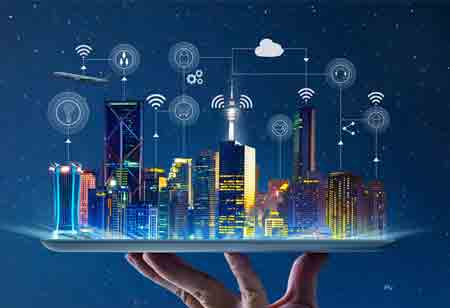THANK YOU FOR SUBSCRIBING
Mobility; the Final Piece to the Smart City Puzzle
Initially, when these technologies emerged, it resembled a utopian vision of mobility where tourists rode e-scooters on the sidewalks, sustainable electric cars roaming around the streets, and share vehicles picking up and dropping commuters a

By
Apac CIOOutlook | Thursday, January 30, 2020
Stay ahead of the industry with exclusive feature stories on the top companies, expert insights and the latest news delivered straight to your inbox. Subscribe today.
Initially, when these technologies emerged, it resembled a utopian vision of mobility where tourists rode e-scooters on the sidewalks, sustainable electric cars roaming around the streets, and share vehicles picking up and dropping commuters at their doorsteps
Fremont, CA: In recent years, there has been a steep rise in electric vehicles, micro-mobility is an alternative to gridlock for commuters, city services are becoming dynamic and automated, and the electrical grid is getting smarter and more efficient. Indeed, the smart city picture is becoming much clearer. Mobility has always been the most visible, and at the same time, conflict-ridden sectors of the smart city model. The number of ways in which people, businesses, goods, and services travel from point A to point B is increasing day by day. In the last decade, we saw the rise of e-commerce, e-scooters, EVs, and transportation network companies (TNCs), while also anticipating the growth of autonomous vehicles (AV) and drone delivery.
Initially, when these technologies emerged, it resembled a utopian vision of mobility where tourists rode e-scooters on the sidewalks, sustainable electric cars roaming around the streets, and share vehicles picking up and dropping commuters at their doorsteps. The increase in options for going the distance led to significant improvements in these technologies, with new regulations for operations. However, with each new mode of mobility, arises a new layer of complexity in our physical and digital landscapes. Unfortunately, not all cities are apt for the adoption of these new ways of commuting, and the rate of development of these technologies is much faster than the rate at which they can be accommodated into the system.
Overcrowding has been a severe problem for some time now, and these new modes of mobility are not helping solve this problem. The new way to commute from point A to point B disrupts an older model of commuting. Entirely autonomous vehicles are likely to emerge in the near future, and they will only add to the crowd in a marketplace. The streets, curbs, and sidewalks are now bearing the weight of technologies, both old and new. This leaves behind cities covered in pollution, which are far from being smart. The need for change is urgent, it has to take place now, or worse scenario is inevitable.
Commuters will be the first to feel the repercussions of the mobility problem. More often than not, commuters are stuck in traffic gridlocks, morning and evening, wailing away hours of valuable time inhaling fumes from exhaust pipes. Business fleets come next in line when it comes to being affected by the mobility problem. Delivery trucks parked at curbs, service vehicles unable to breakthrough bumper to bumper traffic, small business owners often fail to establish efficient means of operations that are needed to increase profitability.
A city thriving with business means every hour is rush hour. Needless to say, pollution levels will also rise day by day, leading to severe environmental damage. It is necessary to answer these questions to bring back the utopian model of mobility.
The adoption of these new modes of mobility also had a significant impact on parking garages and surface lots. Occupancy rates dropped, revenue stagnated, and growth momentum came to a rolling stop. What was once an integrated part of the mobility system went to a near standstill with the advent of new technologies. Instead of navigating to a destination, finding a parking garage, and having to tender exact change, people now prefer just to call an Uber.
However, looking at the bigger picture, parking garages could be the missing piece to the puzzle of new mobility. By evolving, redesigning infrastructure, and resurfacing in the new mobility landscape, parking garages can reach their full potential. The right way ahead would be with parking garages that accommodate micro-mobility, provide charging stations, and support staging for contracted drivers. This can give rise to mobility hubs, which are equipped with the right technology, intelligence, and connectivity, to leverage the full potential of a smart city.
See Also :- Top Smart City Solution Companies





